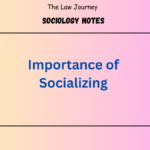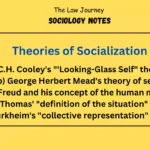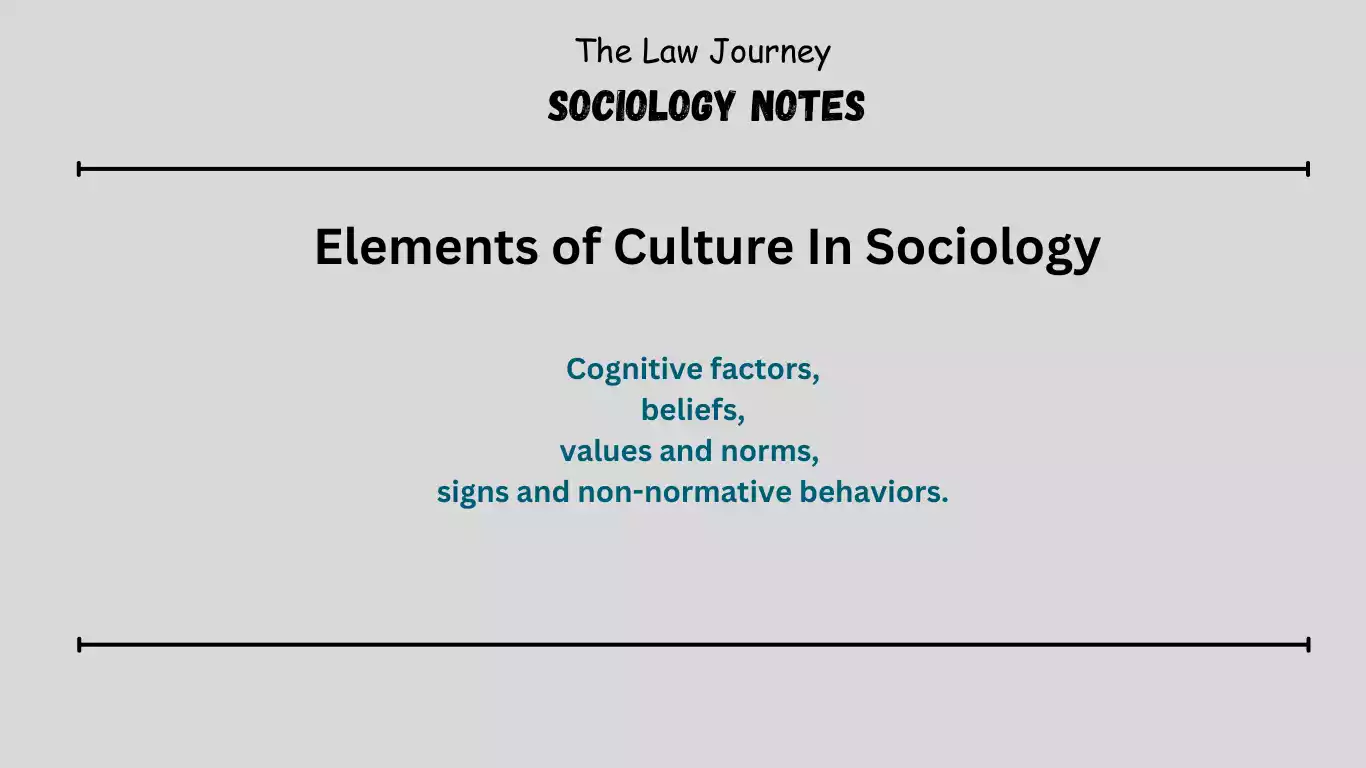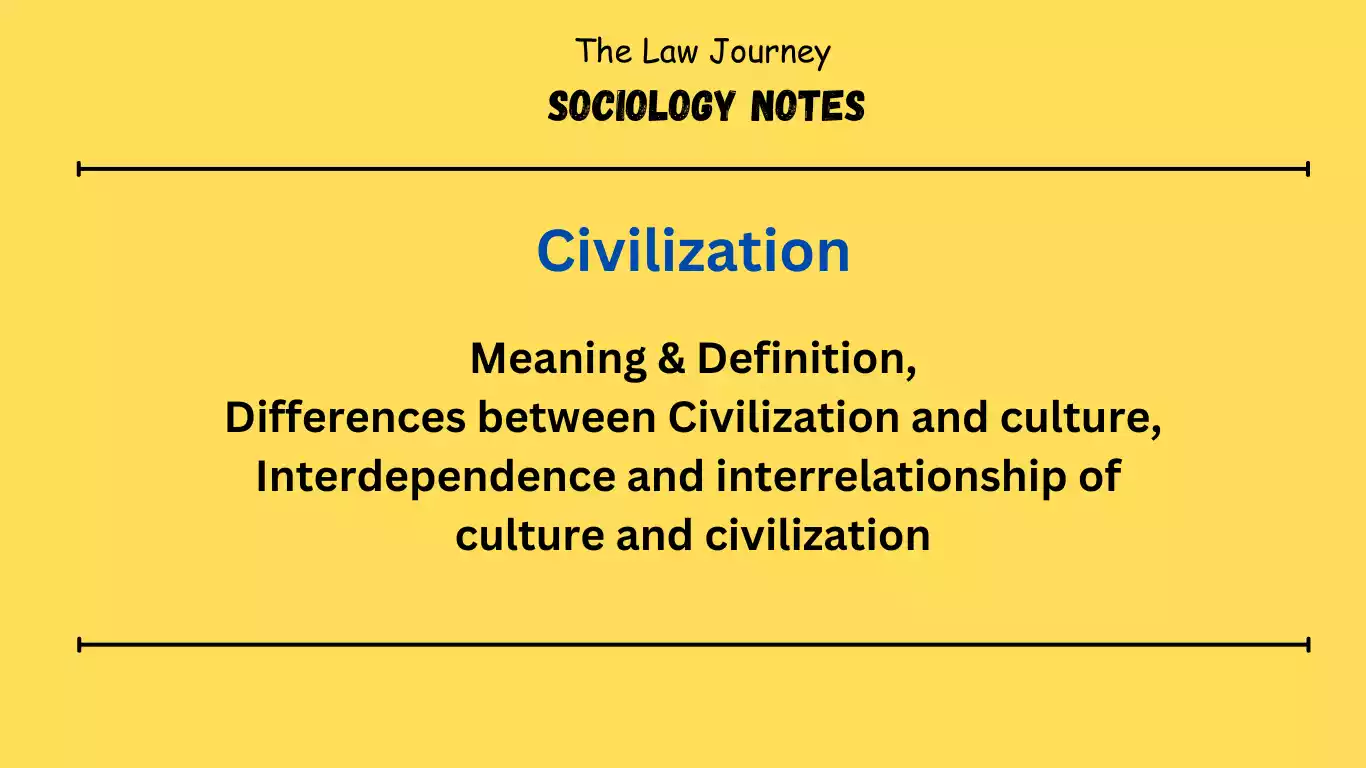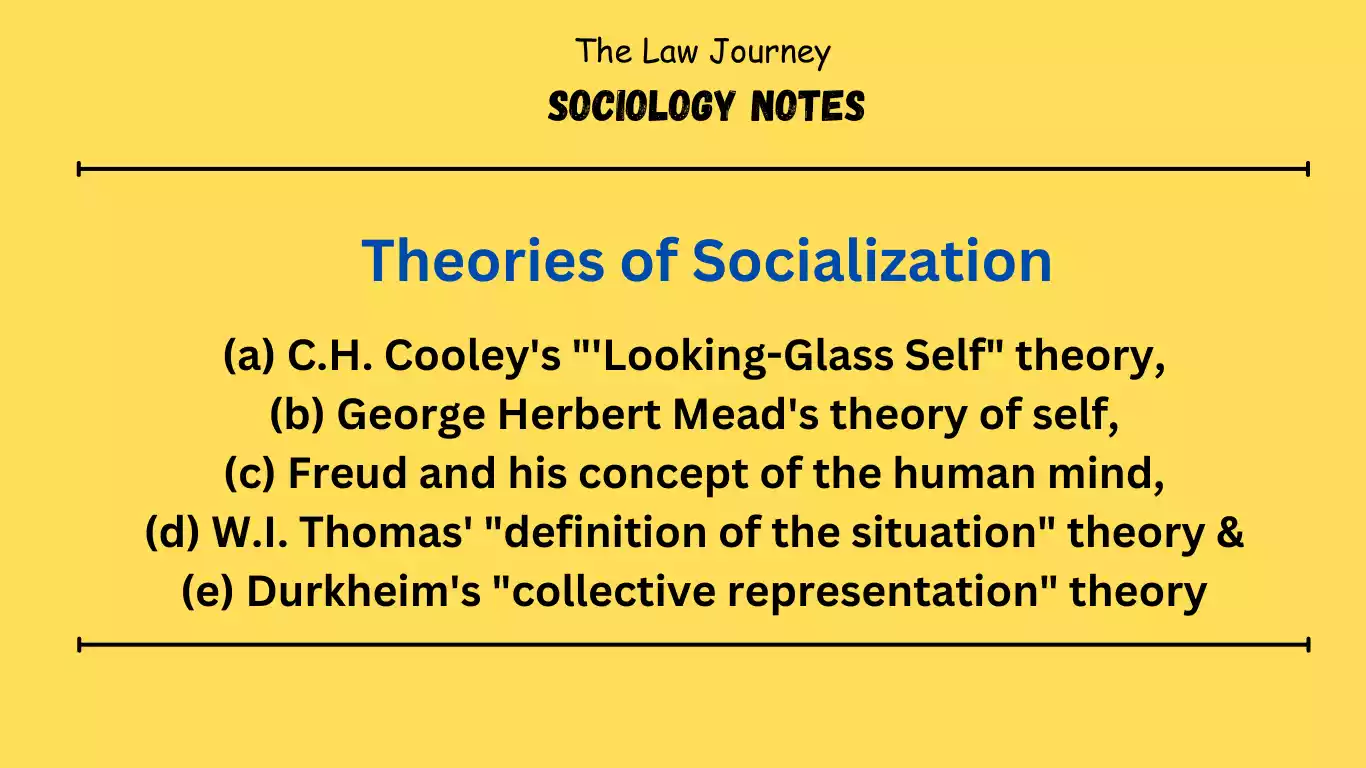According to H.M. Johnson, the main elements of culture are: – Cognitive factors, beliefs, values and norms, signs and non-normative behaviors.
1. Cognitive factors
The cultures of all societies, whether literate or not, have vast knowledge about the physical and social world. This possession of knowledge is called the cognitive component. Even the most primitive or illiterate peoples, such as the inhabitants of the Andaman and Trobriand Islands, need to know many things in order to survive.
Their knowledge is practical knowledge, never “knowledge itself.” Knowledge about how to obtain food, how to build shelter, how to travel and transport, how to protect yourself from storms, wild animals and hostile people is nothing but practical knowledge. This knowledge is carefully passed on to each generation. In today’s advanced societies, knowledge is so vast, deep, and complex that no one can hope to master it completely. Furthermore, every society has many ideas within its culture about its own social organization and how it works.
2. Belief
Beliefs are another element of culture. Empirically speaking, beliefs are neither true nor false. Examples: (i) Eskimo shamans use fetishes to exorcise evil spirits from the bodies of sick people, causing them to go into loud trances. (i) Christian missionaries who give medicine to patients and advise them to get enough rest also pray silently for the patient’s speedy recovery.
Such behavior implies some kind of belief. The beliefs behind these behaviors cannot be confirmed or refuted based on empirical evidence. For example, if a patient dies despite the shaman’s efforts, the shaman will receive an “explanation” that will make him adhere to the belief in evil spirits. Civilized people create similar beliefs and transmit them to subsequent generations.
Verified empirical knowledge and unverifiable beliefs are the “ingredients” of culture. This is because they are often mixed together within the same specific action. Only through intellectual analysis can the various elements be separated from each other. For example, missionaries perform modern medical tests on patients while simultaneously observing a moment of silence.
3. Values and norms
Values and norms are so numerous and diverse that it is very difficult to act on them. They are closely related to attitudes, except perhaps in analytical cases. Value can be defined as a measure of goodness or desirability. These are group ideas about the relative desirability of things. Sociology is primarily concerned with values that play a direct or indirect role in social relationships. partially institutionalized moral and religious values;(Elements of Culture)
One way he understands values and their connections is to look at values through society’s four functional subsystems. These subsystems are government, family, economy, and religion. The functions and social activities performed by these four interconnected subsystems are strongly influenced by values. However, these four subsystems are not highlighted as equally important in all societies. Typically, in any society, values specific to one (or two) subsystems are dominant. This usually means that political, family, economic, or religious values take precedence.
Example: In his research, Berra showed that “political values” were dominant in Japan during the Tokugawa period (16th century AD to his 19th century). They were at the top of the hierarchy and enjoyed great power and respect. Merchants engaged in economic activities had a relatively low status, and loyalty to the nation and the emperor was valued, even among family members. Japanese religion also emphasized the primacy of political values. (Elements of Culture)
In Japan, filial piety and piety, both religious and social values, were inferior to loyalty to the nation. Japan’s two major religions, Shinto and Zen Buddhism, emphasized loyalty to the state. Here, “non-secular” religious teachings and political values were subordinated. Similarly, in India, religious values have dominated India’s social institutions for centuries. It’s still pretty dominant.
But how can we know what values prevail in a society?
Sociologist Willams proposed the following criteria for dominant values: (i) the totality of the system; (ii) the duration of the value, i.e. how persistently important it has been over a period of time; (iii) the intensity of the pursuit or maintenance of the value; (iv) the carrier of the value; that is, the prestige of a person, object, or organization considered to be a bearer of value. Furthermore, every society has secondary values in addition to its primary values.
For example, in Lanan, the value of “aesthetic feelings” is so emphasized that it is of secondary importance. In India, political values are secondary.
Norms are closely related to values. They are standards of behavior shared by the group. Norms limit our behavior. These are exemplary practices. They determine, control, and guide our actions. In fact, values are measured only by compliance with norms. Norms are established based on values. Therefore, norms and values belong together. For H.M. Johnson: “Values are general standards that can be considered higher order norms.” Norms and values together form important elements of culture.(Elements of Culture)
4. Signs
Signs include signals and symbols. “A signal (also meaning sign) indicates the past, present, or future existence of a thing, event, or condition.” Example: A pile of half-burnt particles from a house indicates that at some point the house was sometimes on fire. It shows that it was wrapped in the past. A wet road surface is also a sign that it has rained. The soldiers head to the training ground at the signal for the parade. Therefore, either the signal and its object are both part of a more complex event, or
unit. Many invented or artificial symbols are used in social life and given meaning.
For example: A gunshot can mean the start of a race, the sighting of danger, the start of a parade, the start of a war, the killing of wild animals, terrorist activity, etc. The signals and symbols are slightly different. Look for the “No Parking” sign. Indicates the existence of a place where the vehicle should not be parked. But the letters on the poster represent symbols, and just like traffic lights, symbols mean something to the interpreter. But it serves more to bring an idea to his mind about something than to signal the existence of the thing itself. For example, “deer” and “pigeon” represent such concepts. “Deer” or “dove” refer to a specific species of animal or bird.
Therefore, “a signal involves a three-term relationship (interpreter, signal, object), whereas a symbol involves a four-term relationship (interpretant, symbol, concept, object). The signal is us It is concerned with all practical activities. Symbols are important in many forms of communication and expression, including religion and art.(Elements of Culture)
Language is an important symbolic system in every society. At the level of “educated” people, the language is spoken exclusively orally. Written records as a symbolic system helped people rely on memories and knowledge of the elderly’s past. The intellectual vision of an educated person is probably very limited because of the inability to use the symbols of written records.
Languages (English, Spanish, French, German, etc.), which have vast libraries on various subjects and topics, are the key to a very rich culture. Speech, an aspect of the language system, consists of sounds and other types of gestures (such as bowing, shaking hands, greetings, kissing, and blushing). These gestures also have symbolic meanings, most of which are cultural in nature.
For example, we smile at people we know, cry when faced with sadness, and laugh when we are happy. In such cases, gestures are correctly interpreted as signals based on internalized symbols. However, not every gesture is necessarily connected with the emotion it expresses. For example, you should smile at people you know, regardless of whether you are really happy to see them or not. Jesus kissed Judas, who had betrayed him.
In addition to language and gestures, other elements are important in shared symbol systems. It is the “intention” of participants in stable social interactions. One might say that “any object or aspect of an object that is involved in a stable social relationship can acquire cultural symbolic meaning for the interacting participants.” Many material products and objects are primarily symbol carriers. Flags, photos and statues serve as examples here. Similarly, buildings, warehouses, ships, tombs, idols, physical places, etc. are symbolic forms with cultural meaning.
5. Non-normative behavior.
Certain actions are not forced and are often done unconsciously. There are also such patterns. Non-normative behavior gives way to normative and symbolic behavior. For example, Jewish gestures primarily involve the hands and tend to symbolize subtle developments in an argument or a train of thought. Italian gestures use the entire arm and tend to express emotion. Both symbol systems tended to disappear after the second generation of American Jews and Italians.(Elements of Culture)
Related Post | Elements of Culture
- Concept of Social Groups in Sociology
- RTI notes
- Political Notes
- Legal History Notes
- Law of Torts notes
- law project maker
- moot court memorial maker
what are the main elements of culture ?
According to H.M. Johnson, the main elements of culture are: – Cognitive factors, beliefs, values and norms, signs and non-normative behaviors.
Reference Books | Elements of Culture
- Handbook of Indian Sociology by Veena Das
- C.N. Shankar Rao – Principle of sociology with an introduction to social thoughts
- Introduction to Sociology by Anthony Giddens
- Sociological Theory by George Ritzer
- Social Change in Modern India by M N Srinivas
- A Dictionary of Sociology by John Scott







